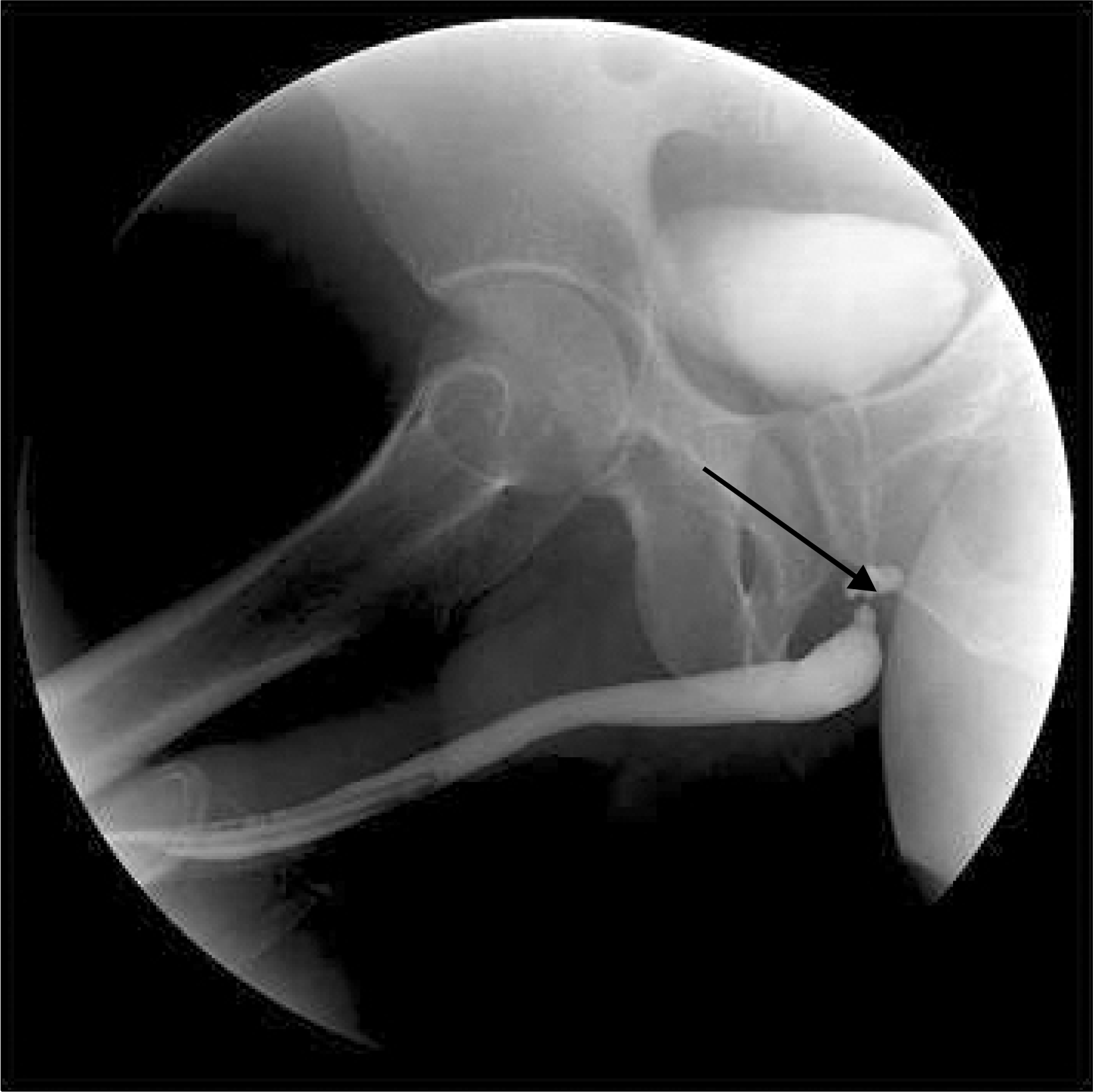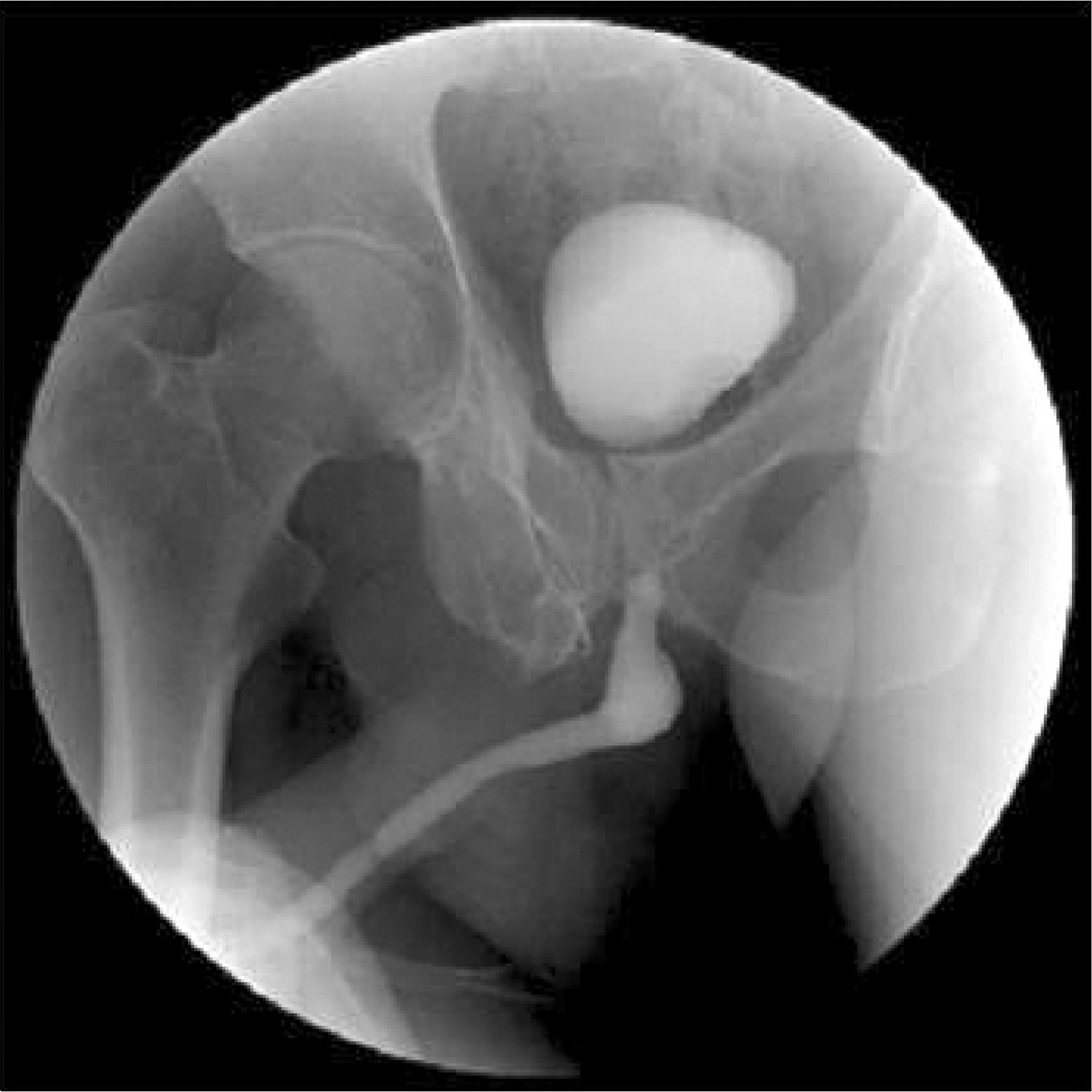Abstract
Purpose
Endoscopic holmium:yttrium-aluminum-garnet (Ho:YAG) laser urethrotomy is an alternative method in the management of urethral strictures. We report our initial experience in 15 cases of evaluating the therapeutic efficacy of the holmium laser for treating incomplete urethral strictures.
Materials and Methods
Endoscopic holmium laser urethrotomy was primarily performed on 15 patients with incomplete urethral stricture. Exclusion criteria were complete urethral stricture and previous treatment of urethral stricture. Retrograde urethrography and uroflowmetry were performed preoperatively and were carried out as follow-up studies postoperatively.
Results
Successful results without recurrence were achieved in 8 of 15 patients. When we classified the results by stricture length, the success rate was 80% in strictures less than 2 cm, whereas there was no therapeutic effect in strictures over 2 cm. When we classified the results by etiology, the number of successful results in strictures with an inflammatory, trauma, iatrogenic, or unknown cause was 2 (2/8), 3 (3/4), 2 (2/2), and 1 (1/1), respectively. In 7 patients who failed treatment, we repeated holmium laser urethrotomy in 5 patients and urethroplasty in 2 patients. No operative complications occurred in any patients.
REFERENCES
1.Levine LA., Strom KH., Lux MM. Buccal mucosa graft urethroplasty for anterior urethral stricture repair: evaluation of the impact of stricture location and lichen sclerosus on surgical outcome. J Urol. 2007. 178:2011–5.

2.Giannakopoulos X., Grammeniatis E., Gartzios A., Tsoumanis P., Kammenos A. Sachse urethrotomy versus endoscopic urethrotomy plus transurethral resection of the fibrous callus (Guillemin's technique) in the treatment of urethral stricture. Urology. 1997. 49:243–7.

4.Delvecchio FC., Preminger GM. Endoscopic management of urologic disease with the holmium laser. Curr Opin Urol. 2000. 10:233–7.

5.Dogra PN., Ansari MS., Gupta NP., Tandon S. Holmium laser core-through urethrotomy for traumatic obliterative strictures of urethra: initial experience. Urology. 2004. 64:232–5.

6.Sachse H. Treatment of urethral stricture: transurethal slit in view using sharp section. Fortschr Med. 1974. 92:12–5.
8.Fourcade RO., Mathieu F., Chatelain C., Jardin A., Richard F., Kuss R. Endoscopic internal urethrotomy for treatment of urethral stricture: midterm survey. Urology. 1981. 18:33–6.
9.Gonzalez R., Chiou RK., Hekmat K., Fraley EE. Endoscopic reestablishment of urethral continuity after traumatic disruption of the membranous urethra. J Urol. 1983. 130:785–7.

10.Futao S., Wentong Z., Yan Z., Qingyu D., Aiwu L. Application of endoscopic Ho: YAG laser incision technique treating urethral strictures and urethral atresias in pediatric patients. Pediatr Surg Int. 2006. 22:514–8.
11.Nabi G., Dogra PN. Endoscopic management of post-traumatic prostatic and supraprostatic strictures using neodymium-YAG laser. Int J Urol. 2002. 9:710–4.

12.Turek PJ., Malloy TR., Cendron M., Carpiniello VL., Wein AJ. KTP-532 laser ablation of urethral stricture. Urology. 1992. 40:330–4.
13.Bulow H., Bulow U., Frohmuller HW. Transurethral laser urethrotomy in man: preliminary report. J Urol. 1979. 121:286–7.
14.Smith JA Jr., Dixon JA. Neodymium: YAG laser treatment of benign urethral strictures. J Urol. 1984. 131:1080–1.
15.Vicente J., Salvador J., Caffaratti J. Endoscopic urethrotomy versus urethrotomy plus Nd-YAG laser in the treatment of urethral stricture. Eur Urol. 1990. 18:166–8.
16.Kamp S., Knoll T., Osman MM., Kohrmann KU., Michel MS., Alken P. Low-power holmium: YAG laser urethrotomy for treatment of urethral strictures: functional outcome and quality of life. J Endourol. 2006. 20:38–41.
17.Kuo RL., Aslan P., Zhong P., Preminger GM. Impact of holmium laser settings and fiber diameter on stone fragmentation and endoscope deflection. J Endourol. 1998. 12:523–7.

18.Singal RK., Denstedt JD., Razvi HA., Chun SS. Holmium: YAG laser endoureterotomy for treatment of ureteral stricture. Urology. 1997. 50:875–80.

19.Gilling PJ., Cass CB., Cresswell MD., Fraundorfer MR. Holmium laser resection of the prostate: preliminary results of a new method for the treatment of benign prostatic hyperplasia. Urology. 1996. 47:48–51.

20.Chung YC., Kim BH., Chang HS., Park CH., Kim CI. Clinical evaluation of repeated internal urethrotomy in incomplete anterior urethral stricture. Korean J Urol. 2004. 45:919–23.
Table 1.
Characteristics of the patients




 PDF
PDF ePub
ePub Citation
Citation Print
Print




 XML Download
XML Download